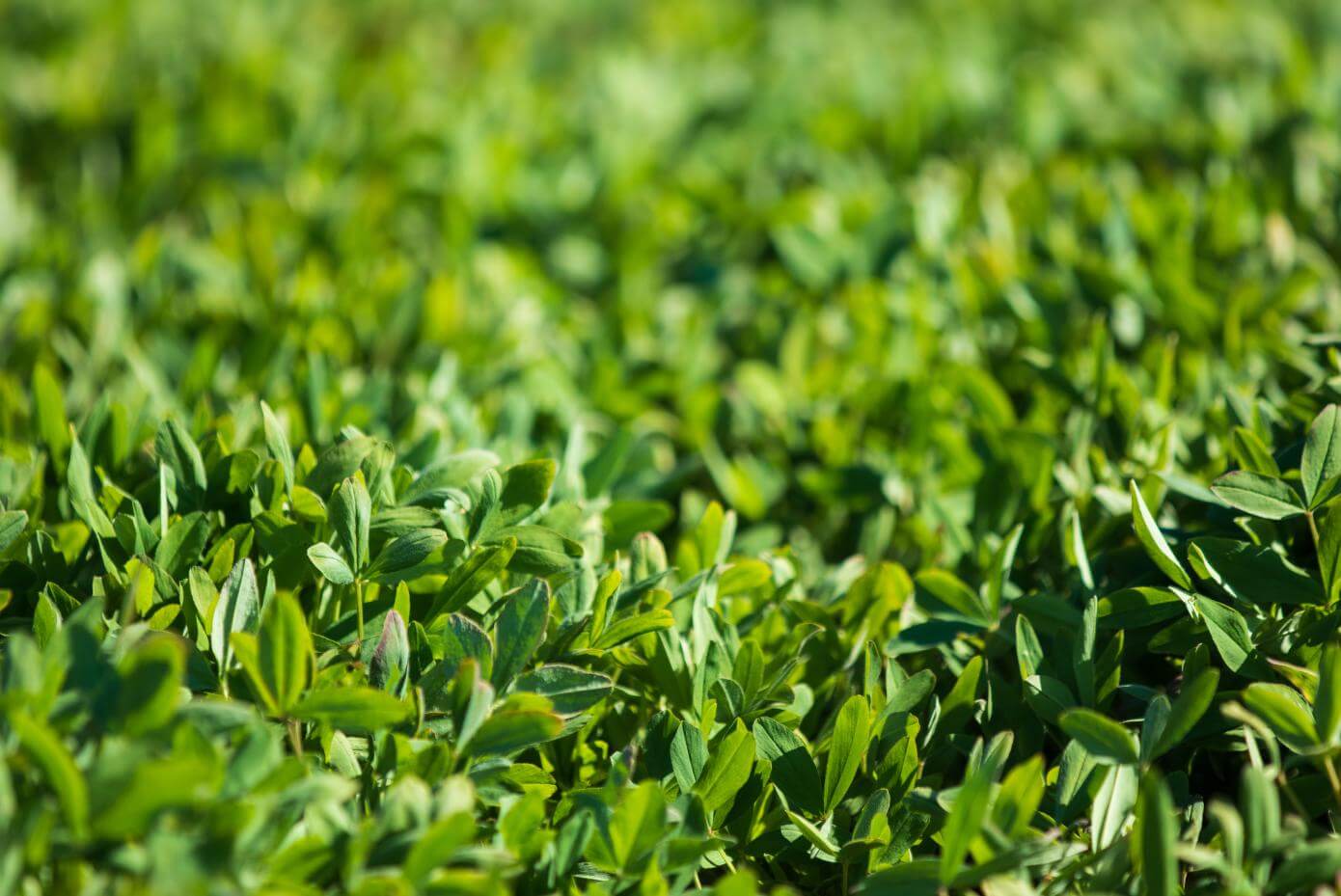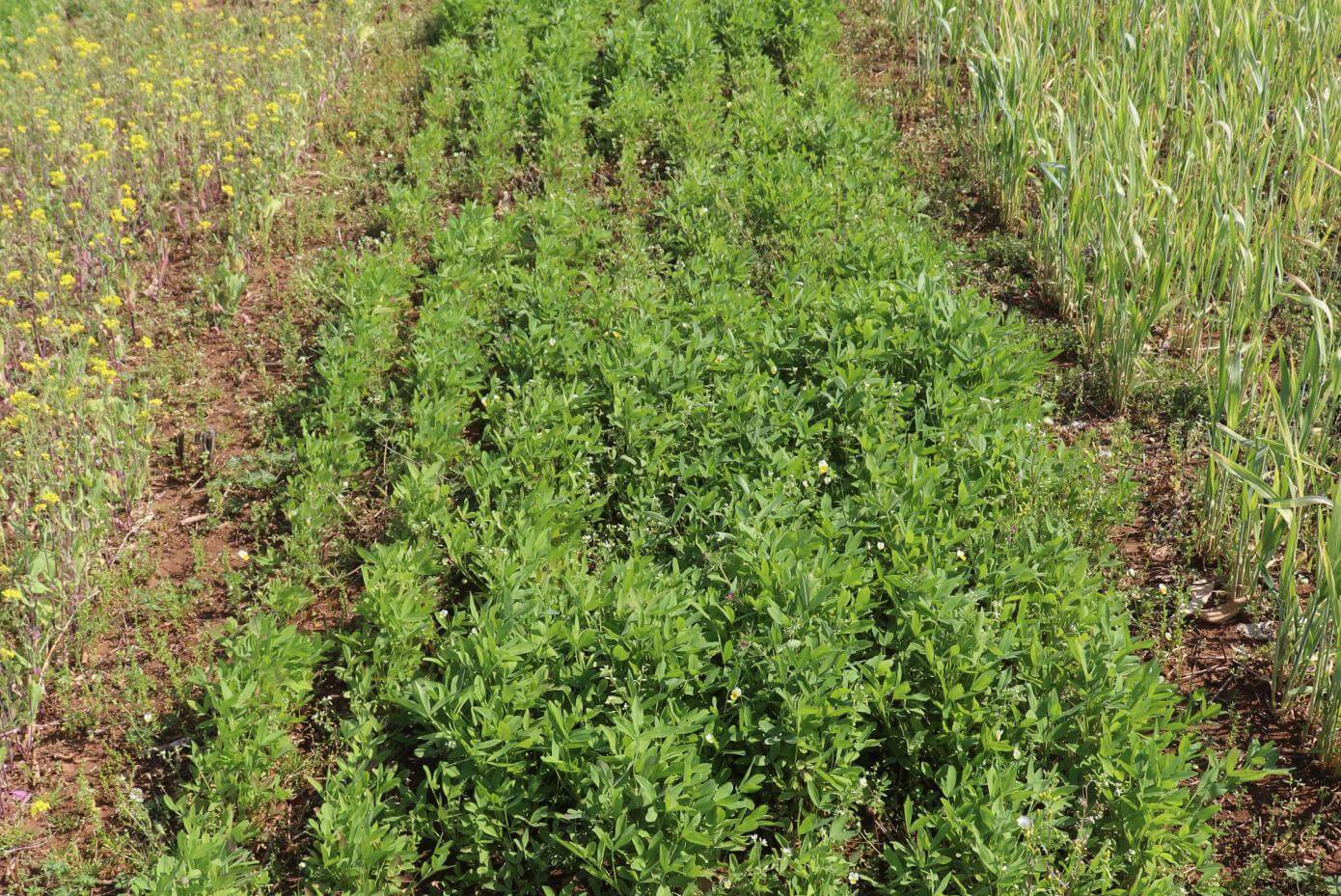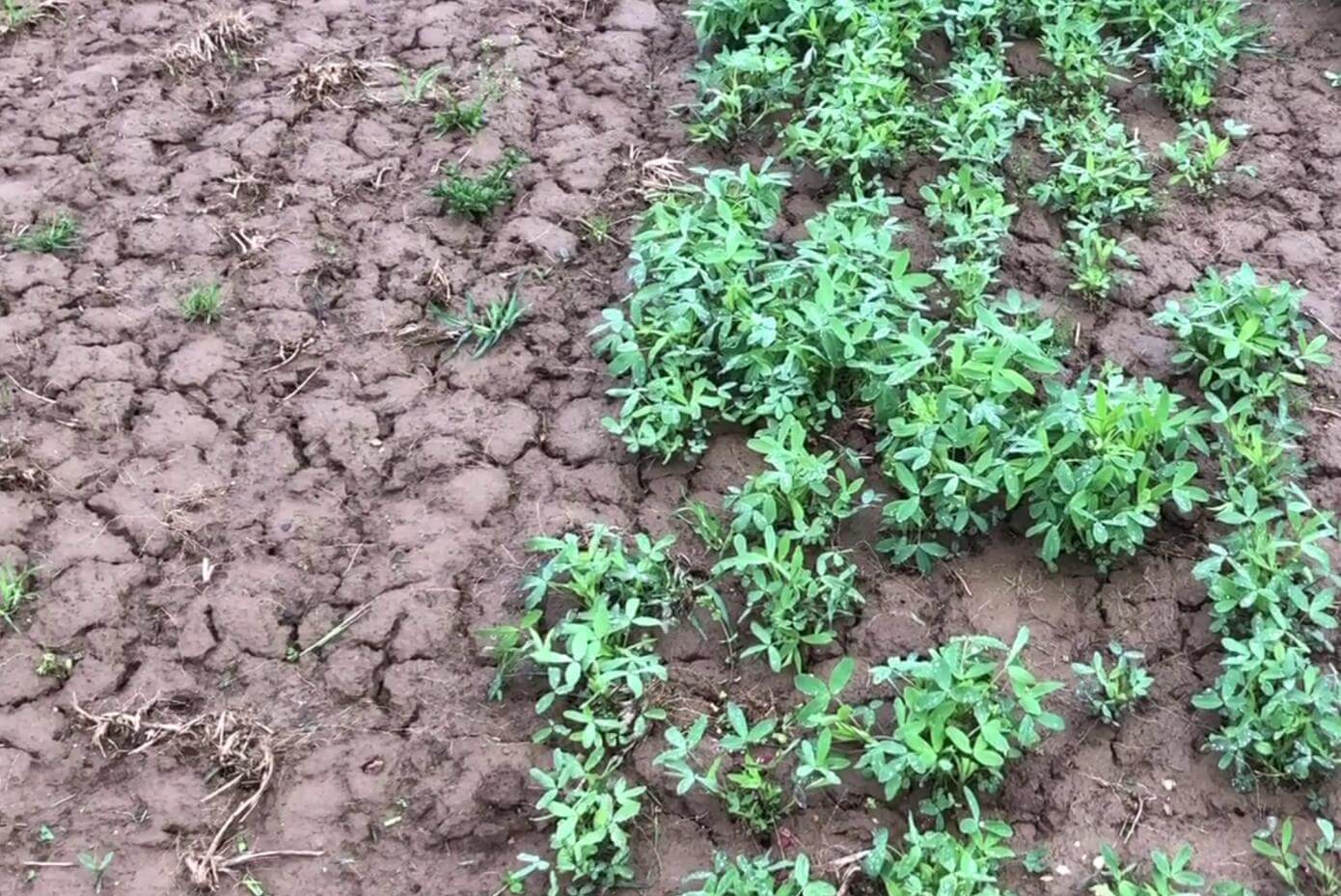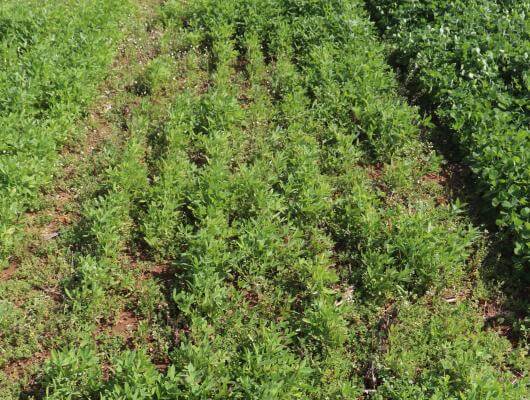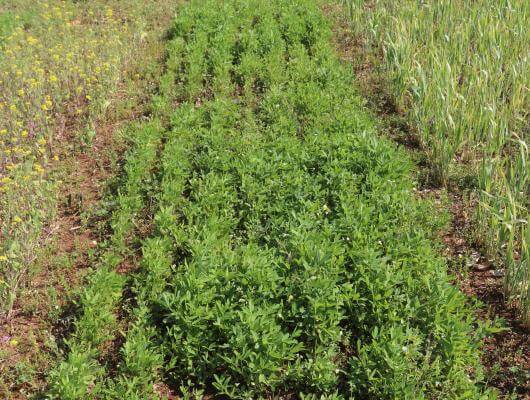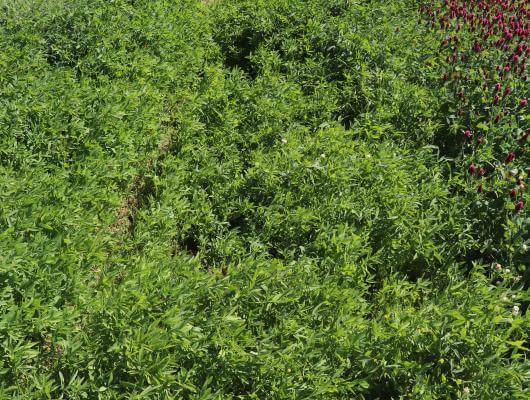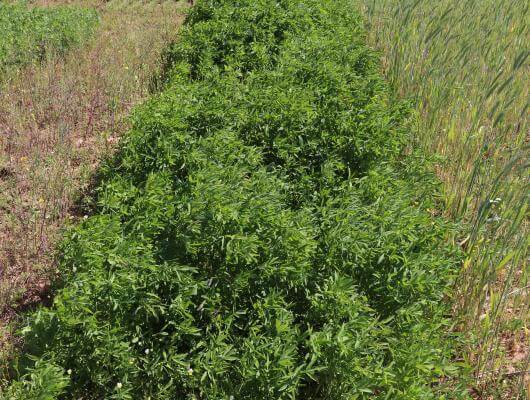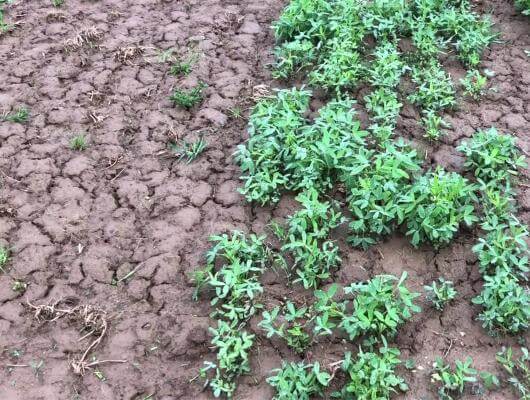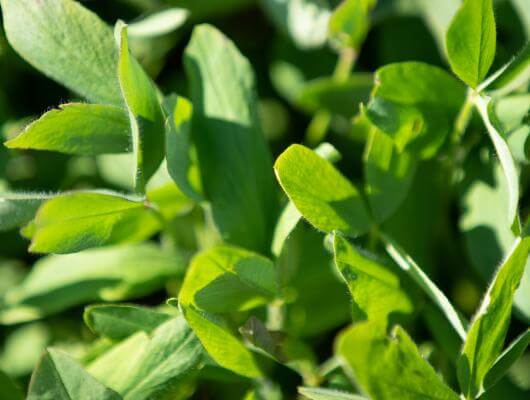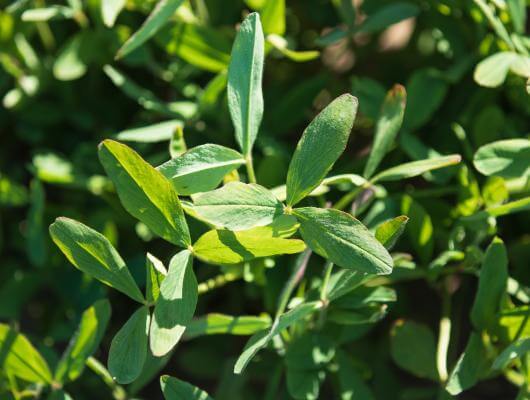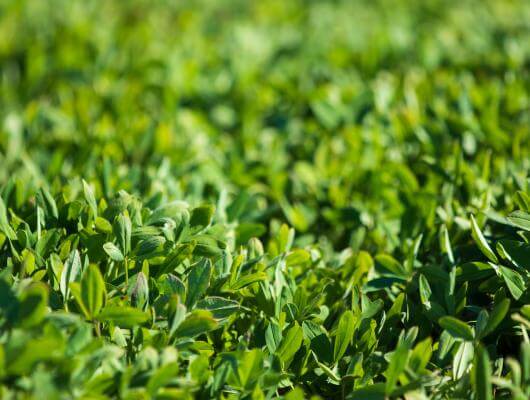Lightning Berseem Clover
Lightning berseem provides explosively fast growth in early spring, offering abundant early forage, multiple harvests and nitrogen-rich biomass.
Variety Summary
Lightning berseem was bred for fast, early spring production and rapid regrowth. Lightning provides protein-rich forage, abundant nitrogen-fixing cover crop, and insect-beneficial pollinator habitat.
A Multipurpose Clover
Lightning can be safely grazed by all livestock, mechanically harvested for hay or silage, or chemically terminated for soil regeneration and nitrogen recycling. Additionally, Lightning’s tasty foliage and attractive flowers makes it an ideal component in wildlife and pollinator mixes.
Forage Quality
Lightning has low-bloat, alfalfa-like forage quality comparable to other high-quality annual legumes. It is ideal for adding to thinning alfalfa stands or for increasing quality in multi-species forages systems. Both stem and leave are very digestible and it is rich in protein.
Pennsylvania
Penn State University
Forage Quality on May 25, 2021
State College, PA
|2020-2021
| CP% | NDFD 30 | TTNDFD | |
|---|---|---|---|
| FiXation balansa | 18.42 | 56.56 | 55.21 |
| Viper balansa | 16.87 | 52.28 | 54.31 |
| Lightning berseem | 21.73 | 47.83 | 43.54 |
| WinterKing hairy vetch | 20.44 | 49.43 | 35.48 |
Tennessee
University of Tennessee
Cover Crop Trials
Knoxville and Spring Hill, TN
|2020-2021
| CP | ADF | NDF | Ash | Fat | Lignin | |||||||
|---|---|---|---|---|---|---|---|---|---|---|---|---|
| Apr | May | Apr | May | Apr | May | Apr | May | Apr | May | Apr | May | |
| AU Merit Vetch | 22.8 | 24.5 | 23.1 | 27.1 | 28.3 | 31.6 | 8.1 | 8.2 | 2.7 | 2.7 | 4.9 | 5.8 |
| Frosty berseem | 20.5 | 19.4 | 22.3 | 26.3 | 29.3 | 32.9 | 8.5 | 9.0 | 2.7 | 2.5 | 4.1 | 5.0 |
| Lightning berseem | 19.9 | 18.9 | 22.7 | 26.7 | 30.3 | 32.7 | 8.8 | 9.1 | 2.7 | 2.4 | 3.9 | 5.1 |
| Fixation balansa | 16.7 | 18.2 | 23.4 | 23.0 | 32.7 | 27.9 | 9.4 | 9.9 | 2.9 | 2.2 | 4.2 | 4.6 |
| Viper balansa | 17.5 | 16.7 | 23.7 | 25.7 | 32.4 | 31.1 | 9.4 | 9.0 | 2.4 | 2.3 | 4.1 | 5.3 |
| Dixie crimson | 18.1 | 16.3 | 21.3 | 31.0 | 29.7 | 37.5 | 8.0 | 4.2 | 2.4 | 2.0 | 4.0 | 6.6 |
Nitrogen Production
Lightning has the ability to produce abundant biomass and return profitable amounts of nitrogen. Trial work conducted in Tennessee and Mississippi indicates Lightning to be capable of producing over 2 tons of DM/ac and releasing 150 units of N/ac as far out as 12 weeks after termination.
Mississippi
Mississippi State University
Cover Crop Trials (March 15 Incorporation)*
Average of 2-Sites (Starkville & Newton, MS)
|2018-2019
| Biomass | Predicted nitrogen available after termination | Market Value | ||||
|---|---|---|---|---|---|---|
| DM lbs/ac | at 2 wks. | at 4 wks. | at 12 wks. | Total N | $/lb N | |
| Dixie crimson | 2970 | 21 | 35 | 50 | 106 | $50 |
| FiXation balansa | 2841 | 20 | 33 | 48 | 101 | $47 |
| AU Merit hairy vetch | 2776 | 19 | 31 | 45 | 95 | $45 |
| Lightning berseem | 2482 | 17 | 28 | 40 | 84 | $40 |
| Frosty berseem | 2731 | 17 | 28 | 41 | 87 | $41 |
| Balady 1 berseem | 2054 | 12 | 19 | 27 | 57 | $27 |
Mississippi State University
Cover Crop Trials (April 1 Incorporation)*
Average of 2-Sites (Starkville & Newton, MS)
|2018-2019
| Biomass | Predicted nitrogen available after termination | Market Value | ||||
|---|---|---|---|---|---|---|
| DM lbs/ac | 2 wks. | 4 wks. | 12 wks. | Total N | $/lb N | |
| FiXation balansa | 3903 | 36 | 53 | 70 | 159 | $75 |
| Lightning berseem | 4380 | 33 | 50 | 66 | 150 | $71 |
| Frosty berseem | 4372 | 33 | 49 | 65 | 147 | $69 |
| Dixie crimson | 3602 | 28 | 42 | 56 | 126 | $59 |
| AU Merit hairy vetch | 3325 | 28 | 42 | 55 | 125 | $59 |
| Balady 1 berseem | 2046 | 12 | 18 | 25 | 55 | $26 |
Tennessee
University of Tennessee
Cover Crop Trials (April Termination)*
Knoxville and Spring Hill, TN
|2020-2021
| Biomass (DM lbs/ac) | 2 wks. | 4 wks. | 12 wks. | Total N | |
|---|---|---|---|---|---|
| AU Merit Vetch | 1989 | 21 | 35 | 50 | 106 |
| Lightning berseem | 1845 | 15 | 25 | 36 | 76 |
| Frosty berseem | 1604 | 14 | 23 | 34 | 71 |
| Fixation balansa | 1061 | 7 | 11 | 17 | 35 |
| Viper balansa | 1364 | 8 | 13 | 19 | 40 |
| Dixie crimson | 1333 | 11 | 18 | 26 | 55 |
University of Tennessee
Cover Crop Trials (May Termination)*
Knoxville and Spring Hill, TN
|2020-2021
| Biomass (DM lbs/ac) | 2 wks. | 4 wks. | 12 wks. | Total N | |
|---|---|---|---|---|---|
| AU Merit Vetch | 2263 | 29 | 43 | 57 | 129 |
| Dixie crimson | 3577 | 28 | 43 | 56 | 127 |
| Frosty berseem | 2741 | 27 | 42 | 54 | 123 |
| Lightning berseem | 2198 | 21 | 32 | 42 | 95 |
| Fixation balansa | 1239 | 13 | 20 | 26 | 59 |
| Viper balansa | 1090 | 11 | 17 | 22 | 50 |
Rapid Regrowth
Lightning is capable of rapid regrowth and multiple harvests/grazings, reaching a height of approximately 23” at peak of growth. Up to three cuttings may be harvested, providing at least 2 tons of harvestable DM/ac.
Fall Planting in Northern Climates
At State College, PA, Lightning was able to be harvested a second time on June 23rd, just four weeks after an initial harvest. Yields from the second cutting exceeded the first cut.
Spring Planting in Northern Climates
In 2022, Michigan State University planted Lightning and other berseem clovers on May 17th with three subsequent cuttings in July, August and October. Lightning’s mid-season yields were best and highest amongst the other varieties.
Michigan State University
Spring Plant Forage Trials (Tons DM/A)
2022
| July 11 | Aug 17 | Oct 24 | Total | |
|---|---|---|---|---|
| Top score | 1.01 | 1.20 | 0.85 | 2.69 |
| Frosty | 0.53 | 1.11 | 0.68 | 2.32 |
| Lightning | 0.47 | 1.20 | 0.53 | 2.20 |
| Helaly | 0.94 | 0.54 | 0.00 | 1.49 |
| LSD | 0.32 | 0.59 | 0.23 | 1.01 |
Broad Adaptation
With breeding roots as far south as Texas and extensive testing in the Northern US, Lightning berseem has shown wide adaptation, favoring heavier soil and non-acid soil. Depending on location, it can be planted in the fall for spring production, or in late spring for summer harvest. Lightning has been tested and performed very well in PA, MI, OH, IN, TN, LA, and MS.
Winter Hardiness
While berseem is generally expected to winterkill in northern climates, Lightning has shown consistent winter survivability in Pennsylvania and Ohio. This data is limited and caution is still advised for fall plantings where open freezing could occur.
Ohio State University
Winter Hardiness & Forage Yield
South Charleston, OH
|2019-2020
| Yield (Tons DM/A) | % Stand (5/1/20) | |
|---|---|---|
| Viper balansa | 1.62 | 100 |
| AU Merit hairy vetch | 1.35 | 100 |
| Lightning berseem | 0.51 | 90 |
| Balady 1 berseem | 0.00 | winterkilled |
| LSD | 0.49 | 4.62 |
Ohio State University
Winter Hardiness & Forage Yield
South Charleston, OH
|2020-2021
| Yield (Tons DM/A) | % Stand (4/20/21) | |
|---|---|---|
| Viper balansa | 0.78 | 95 |
| AU Merit hairy vetch | 1.01 | 99 |
| Lightning berseem | 0.57 | 90 |
| Balady 1 berseem | 0.00 | winterkilled |
| LSD | 0.35 | 2.82 |
Penn State University
Winter Hardiness & Forage Yield
State College, PA
|2020-2021
| Yield (Tons DM/A) | % Stand (5/25/21) | |
|---|---|---|
| WinterKing hairy vetch | 3.43 | 89% |
| Lightning berseem | 2.77 | 87% |
| Viper balansa | 1.67 | 85% |
| FiXation balansa | 1.64 | 87% |
| Balady 1 berseem | winterkilled | winterkilled |
Planting Instructions
Before you plant
Lightning berseem prefers full sun over shade, moderate to heavy soil, and performs best on ground which retains moisture. While able to grow in acidic soils, Lightning is best adapted to soils between 6.5-7.5 pH. Avoid planting under dry conditions or into drought-prone soil. Lightning can be planted separately or with other species.
In established pastures, remove excess forage through grazing or late season haying. This will help ensure successful seedling emergence and establishment. Reduce weed population prior to planting. Be aware of herbicide carryover/residual of chemicals applications prior to planting.
When planted as a single cultivar, a heavier seeding rate is recommended to suppress weeds.
Fertilization requirements
For optimal performance, conduct a soil test prior to planting and follow lime and fertilizer recommendations. No N required.
When to plant
In warmer climates fall is the ideal time to plant. While Lightning has shown good cold tolerance and resistance to winter damage, regions subject to cold, open winters may find spring and early summer to provide the most consistent results. Transition zone and areas prone to snow cover should be safe against winter damage.
Planting method
Lightning can be sown by broadcasting or drilling. When drilling, plant at ¼” or less. Plant into a prepared/firm seedbed by broadcast or drill. Don’t plant too deep! Planting too deep may lead to poor establishment or stand failure. Cultipacking or dragging before and after seeding.
Inoculation
For optimal performance, Lightning berseem clover should be inoculated with Rhizobium leguminosarum biovar trifolii. This is best achieved with Nitro-Coat®.
Seeding Rate
Planting Dates
Planting Map
Planting Depth
1/8"-1/4"
Optimal pH
6.5-7.5
Fertilizer
Apply lime, potassium and phosphorus per soil test results. No nitrogen is necessary.
